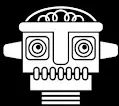Codes for the "Capital-Letter-a-with-Diaeresis" Symbol
Formal Name:
Latin Capital Letter a with Diaeresis
The symbol:
Ä
The Alt Code:
Alt 196
The HTML Code:
Ä
HTML Entity:
Ä
CSS Code:
\00C4
Hex Code:
Ä
Unicode:
U+00C4

"A" with a Diaeresis Explained
The letter "a" with a diaeresis (ä) is used in several languages, including German, Swedish, Finnish, Estonian, and Hungarian, to represent a different sound or vowel quality than the unaccented letter "a". Here are ten examples of when the letter "a" with diaeresis is used:- In German, the letter "ä" represents a fronted, unrounded /ɛ/ sound. For example, "Mädchen" (girl) is pronounced "MÄD-chen", with the "ä" sound similar to the "e" sound in the English word "bed."
- In Swedish, the letter "ä" represents a fronted, unrounded /ɛ/ sound as well. For example, "bära" (to carry) is pronounced "BEH-ra", with the "ä" sound similar to the "e" sound in the English word "bet."
- In Finnish, the letter "ä" represents a fronted, unrounded /æ/ sound. For example, "läpi" (through) is pronounced "LAE-pi", with the "ä" sound similar to the "a" sound in the English word "cat."
- In Estonian, the letter "ä" represents a fronted, unrounded /æ/ sound as well. For example, "päev" (day) is pronounced "PAE-v", with the "ä" sound similar to the "a" sound in the English word "cat."
- In Hungarian, the letter "ä" represents a fronted, unrounded /ɛ/ sound. For example, "téma" (topic) is pronounced "TEH-muh", with the "ä" sound similar to the "e" sound in the English word "bed."
- In Finnish, the letter "ä" also indicates that the vowel is a separate syllable from the preceding vowel. For example, "kauppa" (store) is pronounced "KAU-pa", with the "ä" forming its own syllable.
- In some romanization systems, such as the International Phonetic Alphabet (IPA), the letter "ä" is used to represent a fronted, unrounded vowel sound in other languages, such as Finnish and Estonian.
- In some loanwords from German, such as "Männer" (men) and "Führer" (leader), the letter "ä" is used in English to represent the fronted, unrounded vowel sound.
- In some loanwords from French, such as "naïve" and "maïs," the letter "ä" is used to indicate that the two vowels are pronounced separately, rather than forming a diphthong.
- In some personal or place names, such as "Häagen-Dazs" and "Mäkinen," the letter "ä" is used for historical or branding reasons, rather than to indicate a specific sound or vowel quality.
Alternative Names
The letter "a" with a diaeresis (ä) can also be called "a-umlaut" or "a with an umlaut." In some languages, such as German, it may be referred to as "a mit Umlaut" or "a-diaeresis." In Swedish, it is called "a med trema." In Finnish, it may be referred to as "a kirjaimen treema," and in Estonian, it is called "a-täpp." In some linguistic contexts, it may also be called "a with two dots" or "a with double dots."Test Your Knowledge of the Accented Letters
Here is a quick quiz to test your knowledge of the accented letters.View the Symbol in Different Sizes and Fonts
ABC Ä 123
ABC Ä 123
| Attribute | Setting | Change |
|---|---|---|
| Font Size | ||
| Font Family | Arial |
|
| Color/Colour |
|
Video Explaining How to Insert Special Symbols
This video explains 7 ways to insert a special symbol into an MS Office application (e.g., Word) or a website using HTML, CSS, or JavaScript:How To Insert the Ä Symbol
(Method 1) Copy and paste the symbol.
Click on the Ä symbol from the table above. Press the "Copy" button, and then paste the symbol into your document.(Method 2) Use the "Alt Code."
The Alt Code for Ä is Alt 196. If you have a keyboard with a numeric pad, you can use this method. Simply hold down the Alt Key and type 196. When you lift the Alt Key, Ä appears. ("Num Lock" must be on.)(Method 3) Use the HTML Decimal Code (for webpages).
| HTML Text | Output |
|---|---|
| Ä | Ä |
(Method 4) Use the HTML Entity Code (for webpages).
| HTML Text | Output |
|---|---|
| Ä | Ä |
(Method 5) Use the CSS Code (for webpages).
| CSS and HTML Text | Output |
|---|---|
|
<style> span:after { content: "\00C4";} </style> <span>Symbol:</span> | Symbol: Ä |
(Method 6) Use the HTML Hex Code (for webpages and HTML canvas).
| HTML Text | Output |
|---|---|
| Ä | Ä |
| JavaScript Text |
|---|
|
const x = "0x"+"C4" ctx.fillText(String.fromCodePoint(x), 5, 5); |
| Output |
Ä |
(Method 7) Use the Unicode (for various, e.g. Microsoft Office, JavaScript, Perl).
The Unicode for Ä is U+00C4. The important part is the hexadecimal number after the U+, which is used in various formats. For example, in Microsoft Office applications (e.g. Word, PowerPoint), do the following:| Type | Output |
|---|---|
| 00C4 [Hold down Alt] [Press x] | Ä (Note that you can omit any leading zeros.) |
| JavaScript Text | Output |
|---|---|
| let str = "\u00C4" document.write("My symbol: " + str) | My symbol: Ä |
(Method 8) Use an Image (for various).
| HTML Text | Output |
|---|---|
| <img src = "myImg.png"/> | Ä |
You might also like...
Send an encrypted message
arrow symbols
special symbols
currency symbols
fractions symbols
Greek-letter symbols
accented-letter symbols
heart symbols
Mathematics symbols
music symbols
punctuation symbols
Help Us Improve Cyber Definitions
- Do you disagree with something on this page?
- Did you spot a typo?
- Do you know a slang term that we've missed?
Share This Page

If you like Cyber Definitions (or this page in particular), please link to it or share it with others. If you do, please tell us. It helps us a lot!
Create a QR Code

Use our handy widget to create a QR code for this page...or any page.
More Topics...
emoji library
(send a huge emoji)sex & dating terms
(fine-tune your search)spotting drug abuse
(protect loved ones)saying "I love you"
(learn new ways)encrypting messages
(get sneaky!)gaming terms
(chat like a gamer)spotting grooming
(protect loved ones)numbers in texting
(improve brevity)Spanish slang terms
(get "slangy" in Spanish)using special symbols
(find the codes)coronavirus terms
(remember covidiots)
